Table of contents
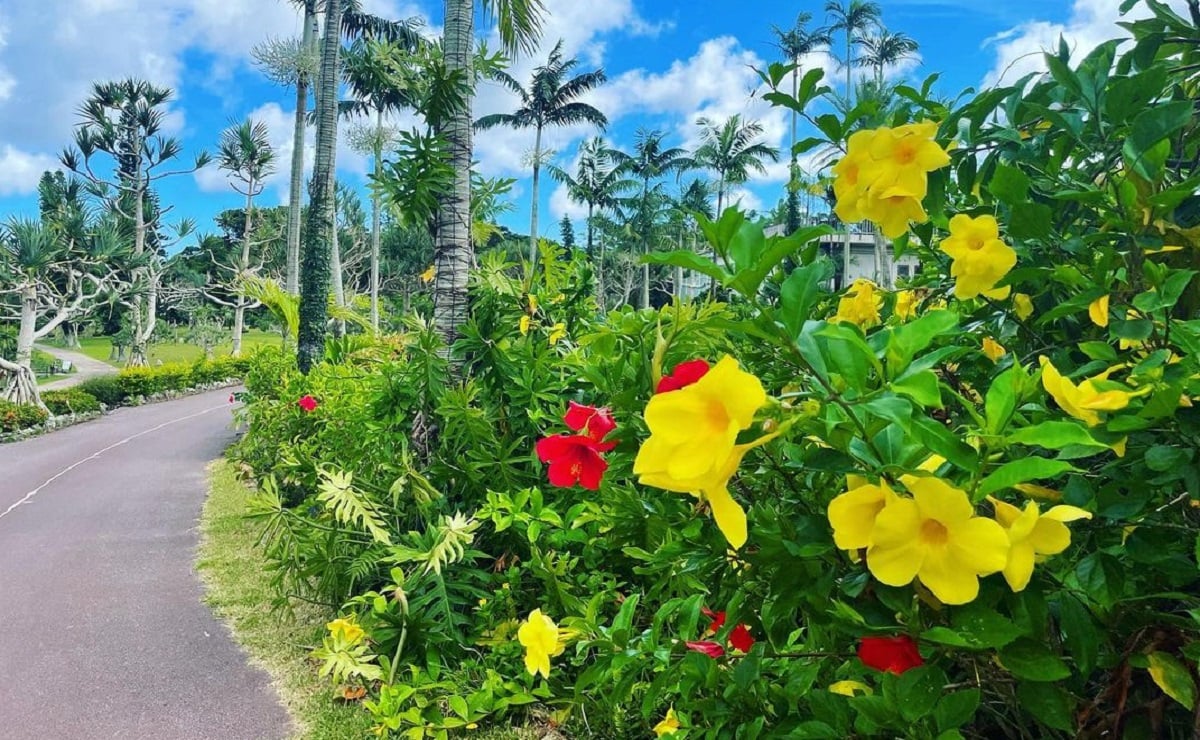
The alamanda is an ideal climber for garden decoration. With trumpet-shaped flowers, the plant blooms all year round, thus making any environment much more beautiful. Besides, it symbolizes joy and fraternity. Would you like to know more about this species? Follow gardener Marcelo Sampaio's tips.
What is the alamanda
The alamanda, or Allamanda cathartica According to Marcelo Sampaio, the species is resistant, easy to cultivate, and requires little daily care. Known as foxglove and orelia, it has a rich diversity of colors, and is present in nature with yellow, white, red, and purple flowers, among other shades.
For some cultures, the alamanda flower symbolizes positivity, harmony, and family love. In addition, the plant is used to elevate the energy of environments, because its strong, vibrant colors often bring joy to the decor.
How to care for the alamanda
According to Marcelo, because it is a Brazilian species, the alamanda adapts well to the tropical climate, which facilitates its cultivation. On a daily basis, the plant appreciates frequent watering and loves a bright environment:
1. irrigation

"The watering of the alamanda can be frequent and abundant, however the plant does not tolerate waterlogging of the soil." Thus, the gardener recommends watering every 2 or 3 days, as well as when the substrate is completely dry.
2. fertilization
"Sampaio recommends using natural fertilizers, such as cattle manure or worm humus, which are more sustainable. The gardener also recommends industrialized fertilizers, such as NPK 10-10-10.
See_also: 25 rose gold Christmas tree designs for an elegant decoration3. luminosity
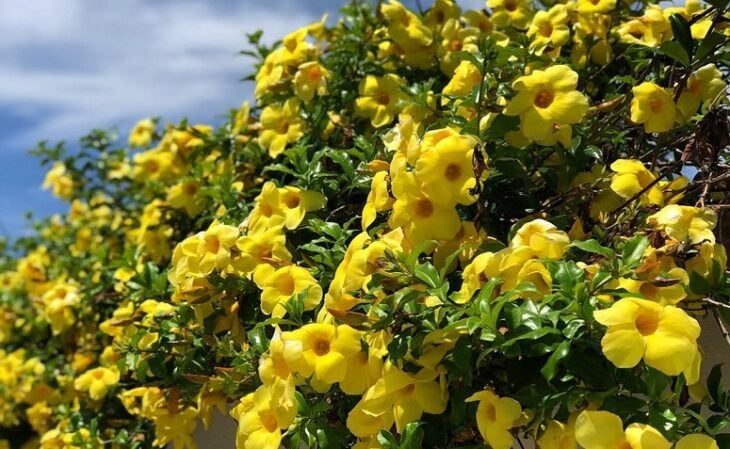
The alamanda is a climber with large leaves and blooms all year round, so Sampaio recommends growing it in full sun, because sunlight is important for the species to grow and develop.
4. substrate
The substrate for the alamanda should be similar to most climbing flowers: rich in organic matter and well-drained. For pot cultivation, the soil should be composed of fine materials, such as construction sand or coconut fiber. Marcelo points out that the flower can also be grown directly on the ground, ensuring a beautiful effect in gardens and outdoor areas.
5. how to make seedlings

"The alamanda is multiplied by seed pollination or cuttings. To plant cuttings, simply cut a branch from the plant and place it in a container with water. After rooting, the new seedling should be planted in a quality, fertile, and drainable substrate." In the first days of cultivation, remember that the young seedling should not be exposed to the sun, because it is not very resistant.
6. how to prune
"Sampaio points out that the alamanda does not tolerate drastic pruning, so it is necessary to handle it with care and attention.
Finally, the gardener reminds us that the alamanda is easily confused with the dipladenia. However, the difference lies in the texture of its flowers. While the alamanda has flowers with a soft, velvety texture, the dipladenia has flowers with smoother petals.
Types of Alamanda
In nature, the alamanda has species that have flowers with different shades and colors. From the simplest to the most exotic, it is possible to collect beautiful varieties. Below, check out some types for you to bet on a colorful decoration:

1. yellow Allamanda cathartica
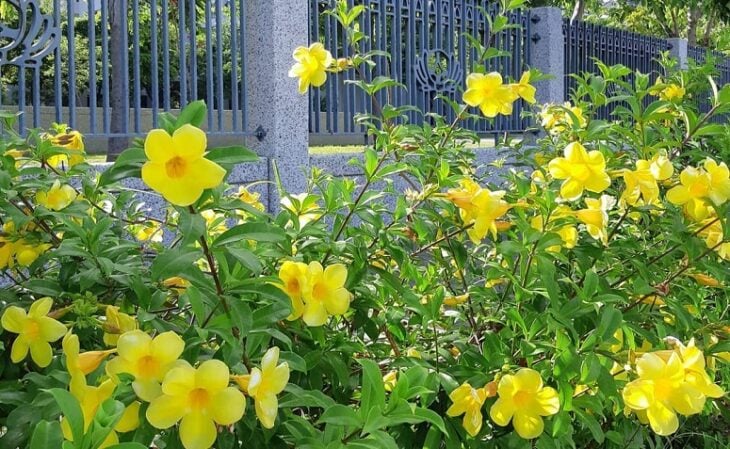
The yellow alamanda is the most common in flower shops and flower markets. The variety is resistant and has intense blooming most of the year. In ideal conditions, with good light and soil rich in organic matter, it can reach up to 5 meters in height.
2. white Allamanda cathartica
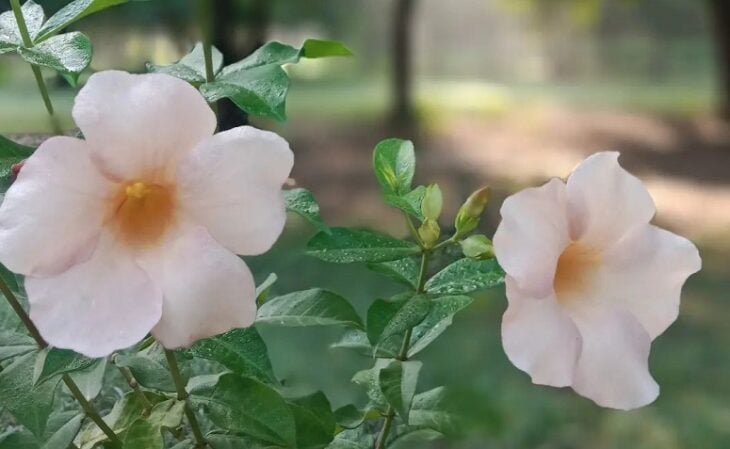
The white alamanda is ideal for a more delicate decoration, because its flowers represent purity and simplicity. The species is less popular compared to the yellow flower, but it also guarantees a beautiful effect to the decoration, especially when grown in pots.
3. allamanda blanchetti
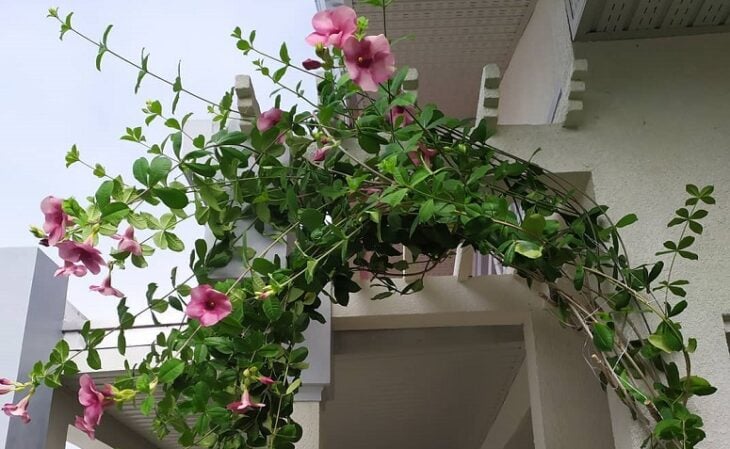
Known as purple alamanda and pink alamanda, the species blanchetti is typical of the Brazilian Caatinga region. It has pink flowers and dark green leaves. It is a more rustic quality with long branches, ideal for planting in windows and pergolas.
4. allamanda blanchetti violacea

The alamanda violacea, also called alamanda-wine, has rounder leaves and dark red flowers, which makes it more ornamental.
5. allamanda polyantha
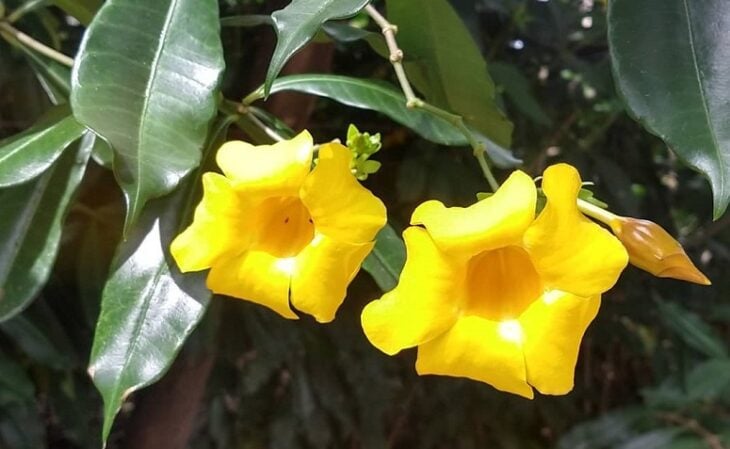
Known as alamanda-de-cerca and alamanda-ereta, polyantha is a perfect variety to compose hedges and outdoor areas. With smaller leaves and flowers, it is also a good choice for growing in pots and in environments with less space.
6. allamanda angustifolia
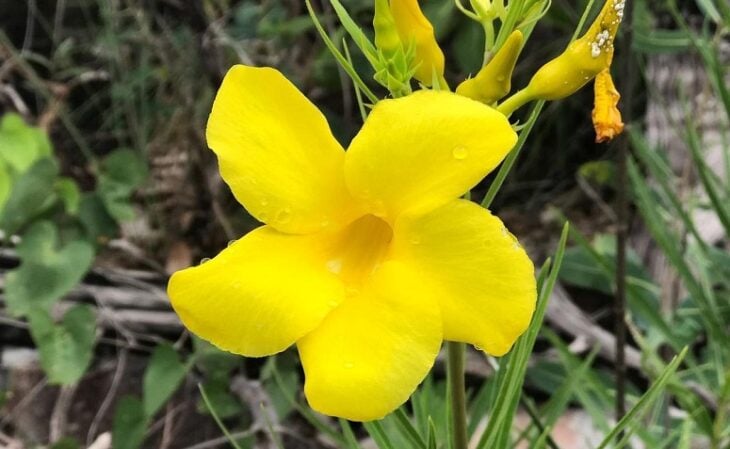
Angustifolia is typical of the Brazilian Cerrado and is among the hardy species of alamandas. As such, it can only be found in nature, such as in valleys and mountains.
7. allamanda jamaican sunset
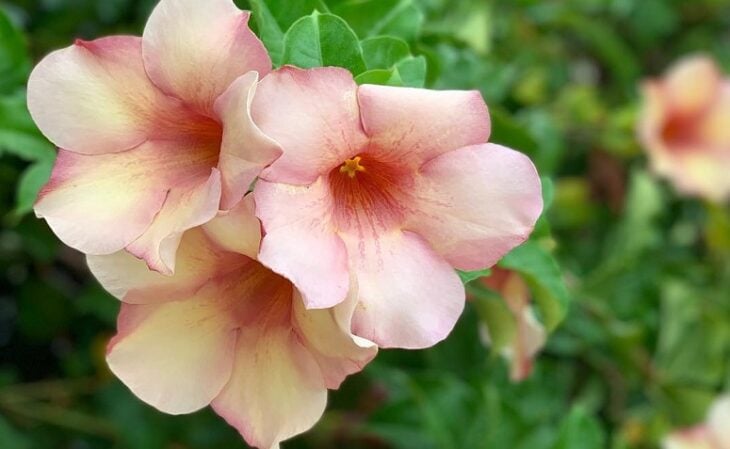
Finally, the Jamaican sunset alamanda is a more exotic species. It has flowers with a mix of cream, yellow, and light pink colors. It is a good choice for growing in open gardens and on balconies. In addition, it can compose beautiful arrangements.
Finally, Marcelo reminds us that the demand for the blue alamanda is common, however this variety does not exist in the flower market. In some cases, the gardener states that the plant receives a blue dye in its roots, which is why it sometimes presents this differentiated coloration.
Questions about alamanda
As a popular little plant with striking flowers, the alamanda is the darling of many gardeners. However, to cultivate it, it is necessary to know a little more about its life cycle, toxicity, and environment. Below, check out some of the doubts clarified by gardener Marcel Sampaio:
How long does the alamanda flower last?
Marcelo Sampaio: It blooms all year round with more intense flowering in spring and summer.
Is the alamanda poisonous?
See_also: Shades of red: 50 ideas to bet on the shade of passionYes. The alamanda has a toxic white sap, which if ingested can cause problems for humans and pets.
What is the price of alamanda?
A seedling costs between R$ 15 and R$ 20, but more exotic varieties or hybrids usually have a higher price.
How to grow the alamanda from seed?
Planting by seed can be done in a pot with good drainage and a substrate rich in organic matter.
How can I use the alamanda in decoration?
The alamanda can be used to decorate pergolas, walls, fences, and hedges, and can be grown in apartments as long as it receives good light.
With these extra tips, you can now grow this beautiful vine at home. Since it has a high degree of toxicity, remember to choose a safe place to grow it, preferably away from children and pets!
Learn more about the alamanda
Want to know how to have beautiful alamanda flowers? Watch the videos with tips about the plant. The selection also brings information for planting in pots, guidelines for pruning and much more:
More tips for caring for the alamanda
In this video, gardener Flávia Kremer brings more tips on how to cultivate the alamanda, considering the ideal substrate, watering, pruning and flowering.
How to grow alamanda in a pot
Growing the alamanda in a pot is a good choice for decoration in compact environments. Find out how to choose the best type of pot for the species, as well as the appropriate substrate and fertilizer. The vlog also brings the step by step of planting with golden tips to keep the vine always beautiful. Definitely worth checking out!
How to make alamanda seedlings
If you want to increase your collection of alamandas at home, be sure to watch this video, which has good tips on how to propagate the vine. The vlog teaches how to make seedlings by cutting. You will need only a few branches of the plant, a good quality soil and a small vase!
Alamanda, a natural pesticide
Did you know that the alamanda has properties that combat common pests in other plants? In this video, the gardener Henrique Buttler teaches how to make a natural pesticide with the leaves of the vine. According to the expert, the recipe can be used to fight aphids and mealy bugs.
After learning how to grow the alamanda, follow the next topic for amazing inspirations. Your home decor will be much more flowery!
10 photos for creative decoration with alamanda
Decorate your home with all the beauty of the alamandas. Below you will find inspirations that will help you incorporate the flower in different environments. The result is full of beauty and modernity.
1. if you love flowers and wish to have a blooming garden all year round
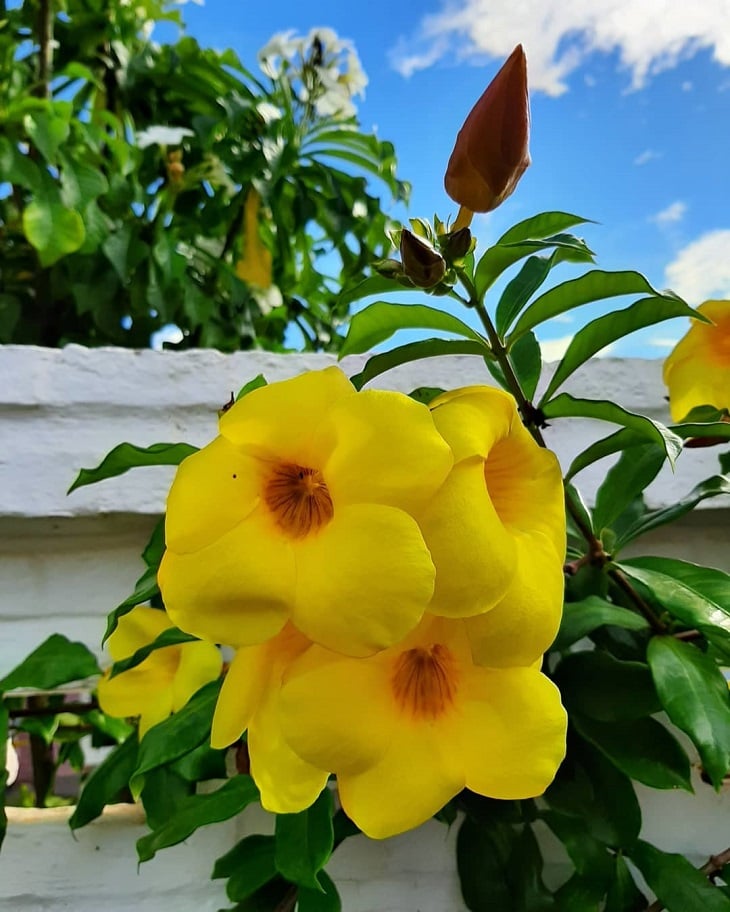
2. so you must have all the charm of the alamandas at home!

3. this climber has flowers with bright, vivid colors
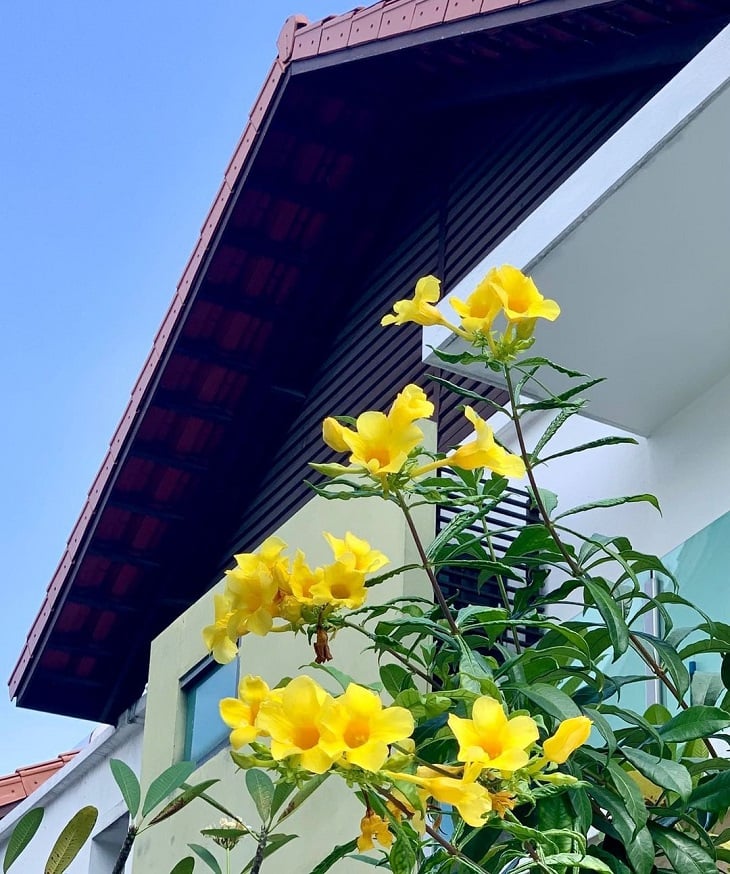
4. it is perfect to compose a decoration full of joy

Symbol of positivity and harmony
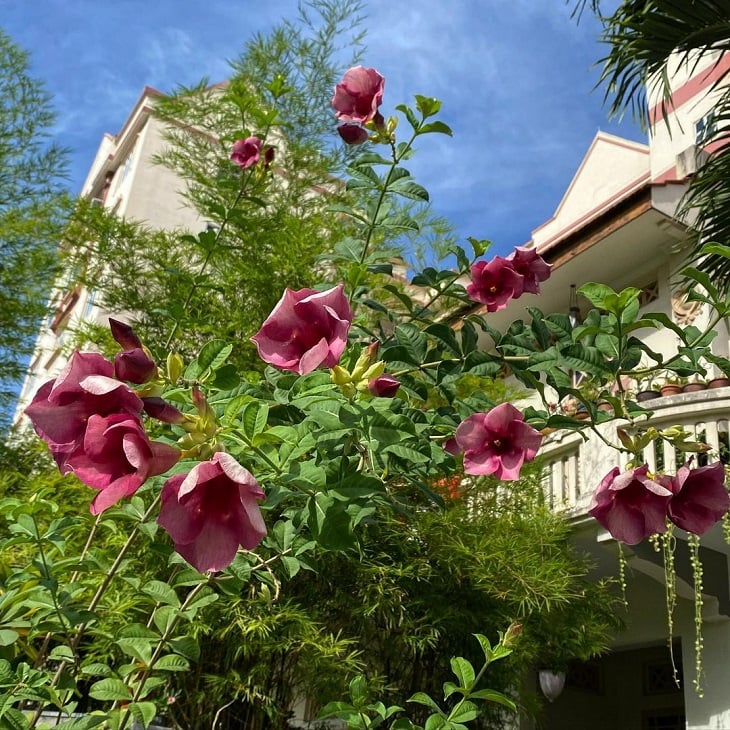
6. the alamanda is a good choice for ornamentation of pergolas

7. the plant exudes its beauty on a hedge
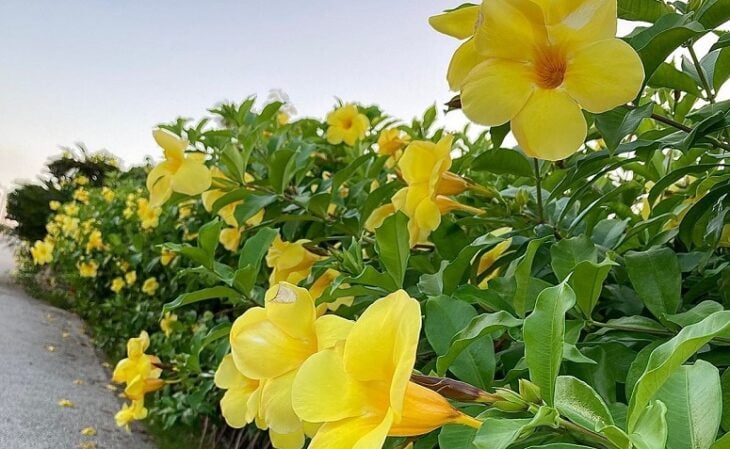
8. it also brings a lot of elegance to gardens and outdoor areas

9. if you prefer, you can choose a beautiful pot to grow it in
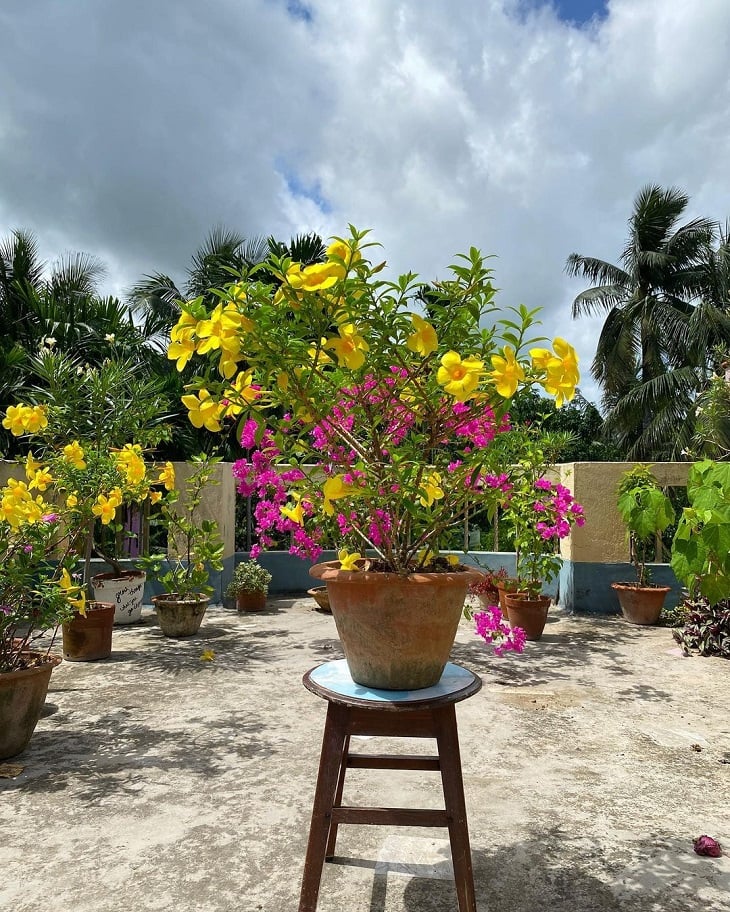
10. know that there are many colors and varieties that will make you fall in love!
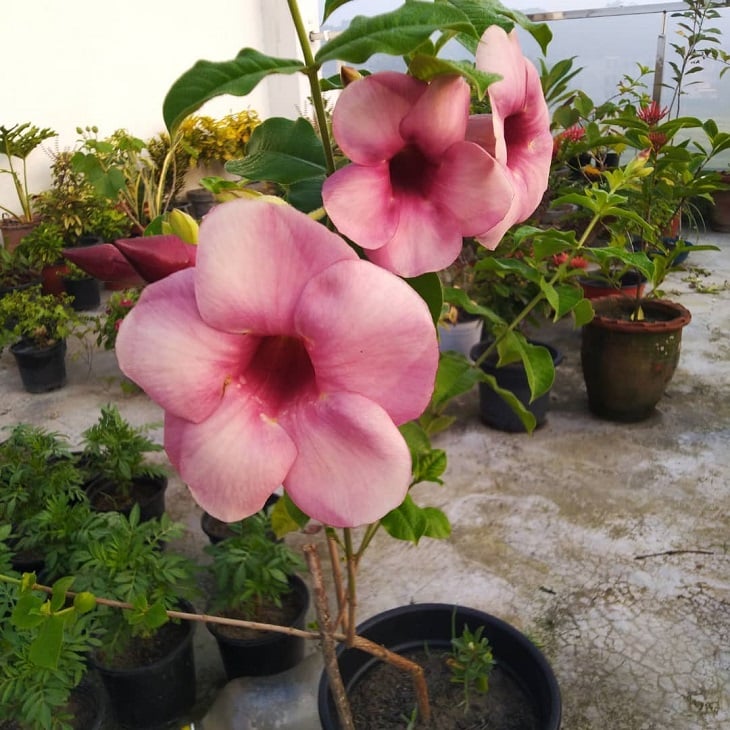
The alamanda will certainly bring color and a lot of joy to your home or garden! Let your little corner be even more colorful with the onze-horas.


